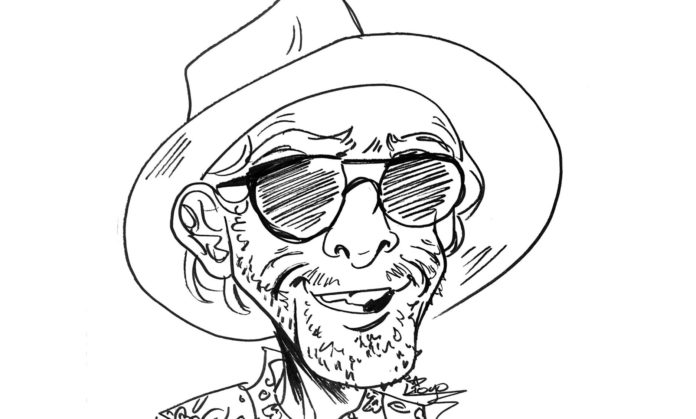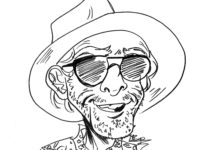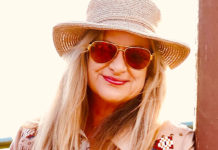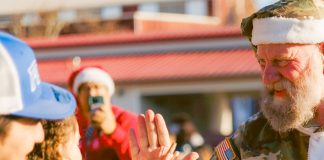I have written prior about my past educational forays at college and university level, so I thought passing on standards of operation regarding television studio and field reporting may interest some. The field report, or onsite report, consists of two separate footages edited together to produce a story. One footage (an archaic term left over from film days) is of the reporter either giving information or interviewing subjects, this footage is referred to as A Roll. All other footage is B Roll. Here is a short, simplified “how to” for field reports.
If a production team were to do a three-to-five-minute story on history of the King City High School Auditorium or the Greenfield Memorial Hall, it would include a reporter, cameraperson and lighting person. The team would choose the best angle location for the reporter to stand with the subject in the background and shoot the introduction, which intro would be done without script in hand. That is A Roll. Then various shots of the exterior and interior of the building, with no audio except ambient (natural) sound, would be edited into the piece accompanied by the reporter’s monologue, a technique called voiceover. This is B Roll.
The A Roll audio can be edited into the B Roll at appropriate times to match the reporter’s words, for example: The piece opens with reporter placed showing building in background then cuts to various exterior shots of building with reporter’s voiceover, the words can be read from a script because the reporter is not seen. When monologue switches to interior scenes, the director cuts to A Roll of reporter inside the building for a few words then cuts to interior B Roll shots. An example would be the reporter standing in front of the Robert Stanton stage or from the upper floor of the Memorial Building editing in close-ups of various aspects of each building while the reporter’s voice is heard explaining each shot. The piece would then end by cutting to A Roll of reporter with closing remarks and the final toss back to the studio; i.e. “This is Charles Bogle reporting for KRZY in Greenfield, California.”
When doing a one-camera, two-person interview, the set-up takes time and more editing. For this shot the camera is placed behind the interviewee with the mize en scene showing part of the head and shoulder of the person with the reporter seen opposite. (“Mize en scene” is a French term, pronounced “mees on sawn,” meaning how everything in the frame, what is seen by the viewer, is arranged for final effect.) With the camera in this position the reporter makes opening introductory remarks then asks a set of questions, usually pre-arranged so interviewee has time to form a response, pausing for three to five seconds between questions.
During this set-up shots are taken of the reporter giving facial expressions and either nodding or shaking the head; these shots are then edited into interviewee’s responses at appropriate times. The camera is then moved to behind the reporter, again with part of the head and shoulder in the frame, shooting responses to the previously recorded comments and questions. The footage of the two camera set-ups is then edited together for the completed interview.
In studio reporting usually employs a three-camera system with two-person reporting; which reporters are called anchors. The middle camera, Camera 2, is used primarily for shots showing both anchors; Camera 1 and Camera 3 primarily shoot one anchor reporting. There are red lights on each camera indicating which camera is shooting at what time, letting the anchor know which camera to face.
All studio reporting is done from a script that appears on a teleprompter affixed just below the camera lens, or in some cases from monitors set in the anchor desk. On occasions when breaking news is presented, the anchor works from a paper script when time does not allow for loading the teleprompter. All shots are pre-planned so each anchor knows when the director is going to cut from a Camera 2 two-shot to a one-shot by either Camera 1 or Camera 3. That is how each anchor knows when to shift the head slightly to look into another camera, always conscious of the little red light indicating the camera is operating at that time.
Of course, this is just a short look at a reporter’s job and does not include the writing of comments done on the fly when in the field or the editing of a piece for final airing and other aspects of news dissemination. While working for the college news station, KRCC, I always had a camera set-up with lights and audio and a tri-pod with me and on occasion was able to get to stories as they were unfolding.
When two small planes collided in mid-air over Corona, Calif., I was living only a half-mile away so was on the scene in minutes. The wreckage covered a couple acres with an apartment set ablaze by flaming debris, while down the street divers were readying to search a large pond situated in one of the upscale, gated communities of the town. I was able to get a couple interviews with fire and police personnel and with the B Roll of the damage was able to edit together enough footage for a four-minute piece.
Why the above? Statistics show there were 97 democratic nations in the world in 2016, by 2021 the number was down to 89 nations. People living under democracies numbered 3.9 billion in 2017 but dwindled to 2.3 billion by 2021. The loss of a free, open and balanced press is vital to any democracy and should be closely guarded.
We recently have heard “fake news” and “enemy of the people” applied to media; this is not good for a free society. So, if there is any purpose to this primer, it is in the hope someone encourages a young person to think about journalism as a career.
Take care. Peace.













